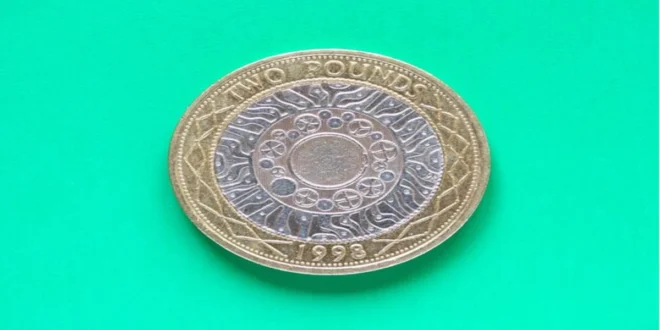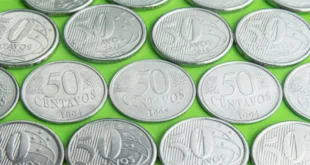1966 Round 50 Cent Coin: A Rare Gem in Australian Currency History
The 1966 round 50-cent coin is a cornerstone of numismatic history, especially for collectors fascinated by Australia’s rich monetary evolution. This coin is not only a relic of a bygone era but also a symbol of the country’s transition to decimal currency. In this comprehensive guide, we will delve into the coin’s history, design, composition, value, and appeal to collectors. By the end of this article, you’ll understand why this piece of Australian currency remains iconic.
1. Introduction to the 1966 Round 50-Cent Coin
The 1966 round 50-cent coin stands as a testament to a pivotal period in Australia’s monetary history. Introduced during the nation’s switch from pounds, shillings, and pence to a decimal system, this coin was the first of its denomination. Struck in 1966, it was the only round 50-cent coin to ever be minted, making it a unique and highly sought-after item for collectors.
Unlike its successors, which were dodecagonal (12-sided), the 1966 coin is round and slightly larger. Due to its high silver content, it has a distinct silver sheen. Despite being circulated for just one year, its legacy endures.
2. The Transition to Decimal Currency in Australia
On February 14, 1966, Australia underwent a revolutionary monetary transformation. The traditional pounds, shillings, and pence system was replaced with a decimal system. This event, popularly known as Decimal Day, introduced new coins and banknotes with simpler denominations.
The round 50-cent coin was one of the flagship denominations of this new era. It represented half a dollar, equivalent to five shillings in the old system. However, its production was short-lived due to unforeseen challenges, which we’ll explore later.
3. Design and Features
Obverse Side
The obverse side of the coin features an effigy of Queen Elizabeth II, designed by British sculptor Arnold Machin. This iconic portrayal, reflecting the Queen’s youth and elegance, was widely used on Commonwealth coins. Surrounding her image are the words “ELIZABETH II AUSTRALIA 1966.”
Reverse Side
The reverse side is a masterpiece of heraldic design, showcasing the Australian Coat of Arms. Designed by Stuart Devlin, the intricate details include a kangaroo and an emu supporting a shield, symbolizing Australia’s rich biodiversity and national identity. Above the shield is a seven-pointed Commonwealth Star, with six points representing the states and one for the territories.
Physical Specifications
- Diameter: 31.5 mm
- Weight: 13.28 grams
- Edge: Milled
- Shape: Round
These features distinguish the 1966 round 50-cent coin as a true work of art and a piece of national heritage.
4. Composition and Minting Details
One of the defining characteristics of the 1966 round 50-cent coin is its composition. Unlike most modern coins, which are made of base metals, this coin contains 80% silver and 20% copper. This high silver content gives it a unique value beyond its face denomination.
Mintage Numbers
Approximately 36 million coins were minted at the Royal Australian Mint in Canberra. While this may seem like a significant number, the subsequent discontinuation of the coin has made it relatively rare in today’s market.
5. Why Was the Round 50-Cent Coin Discontinued?
The 1966 round 50-cent coin was discontinued primarily due to its silver content. Shortly after its release, the price of silver surged on the global market. This led to the coin’s intrinsic metal value exceeding its face value, resulting in widespread hoarding by the public.
The Australian government quickly realized that continuing to produce the coin was financially unsustainable. In 1969, the round 50-cent coin was replaced by a dodecagonal version made from copper-nickel alloy. The new design resolved the issue of metal value while offering a distinct look and feel.
6. Rarity and Value in Today’s Market
Today, the 1966 round 50-cent coin is a prized possession among numismatists. Its value depends on factors such as condition, rarity, and demand. Coins in uncirculated or proof condition fetch significantly higher prices than those with visible wear and tear.
Current Market Value
- Circulated Coins: $12–$15 (AUD) based on silver content
- Uncirculated Coins: $20–$30 (AUD)
- Proof Coins: $100 or more
The coin’s value also fluctuates with the global silver market, as its intrinsic worth is tied to its metal content.
7. Tips for Collectors
If you’re considering adding the 1966 round 50-cent coin to your collection, here are some tips to guide you:
- Verify Authenticity: Ensure the coin is genuine by checking its weight, diameter, and design details. Counterfeits are rare but not unheard of.
- Assess Condition: Coins in mint or near-mint condition are more valuable.
- Purchase from Reputable Sources: Buy from trusted dealers or auction platforms to avoid scams.
- Diversify Your Collection: Consider collecting other Australian coins from the decimal era to complement your 50-cent coin.
8. Preservation and Care
Proper preservation is essential to maintain the value of your 1966 round 50-cent coin. Follow these tips to keep your coin in pristine condition:
- Avoid Touching the Surface: Always handle coins by their edges to prevent fingerprints and oils from tarnishing the metal.
- Use Protective Cases: Store the coin in an airtight capsule to protect it from air, moisture, and pollutants.
- Clean with Caution: Avoid harsh cleaning methods, which can damage the coin’s surface. If necessary, consult a professional numismatist.
9. Interesting Facts About the 1966 Round 50-Cent Coin
The 1966 round 50-cent coin isn’t just a fascinating piece of currency—it’s a multifaceted symbol of Australia’s historical, economic, and cultural evolution. Below, we explore some of the most intriguing facts about this iconic coin that make it an essential item for collectors and history enthusiasts alike.
High Silver Content: A Rare Gem in Australian Coinage
One of the most notable aspects of the 1966 round 50-cent coin is its exceptional silver content. Composed of 80% silver and 20% copper, this coin is among the few in Australian history to contain such a high percentage of precious metal. At the time of its minting, the coin’s intrinsic silver value made it far more valuable than its nominal 50-cent face value.
In fact, the high silver content contributed to the coin’s early demise in circulation. As global silver prices soared during the late 1960s, the coin became a target for hoarding, with many individuals choosing to hold on to the coins for their metal value rather than spend them. This phenomenon was one of the driving factors behind the decision to replace the round 50-cent coin with a more affordable and less precious version in 1969. Even today, the silver content of the 1966 coin adds to its allure, making it not only a numismatic treasure but also a valuable piece for those investing in precious metals.
Limited Circulation: A Coin That’s Rare in the Wild
Despite the Royal Australian Mint’s production of approximately 36 million of these coins in 1966, the 1966 round 50-cent coin is considered remarkably rare in circulation today. The reason for this rarity lies in the aforementioned hoarding phenomenon. As the coin’s metal value began to exceed its face value, Australians started collecting the coins for their intrinsic worth, causing a significant number to be withdrawn from circulation.
Additionally, many coins were saved in pristine condition by collectors, which further reduced their presence in everyday transactions. The result is that while the 1966 round 50-cent coin was widely circulated in its early days, it has since become a rare find, especially in uncirculated or well-preserved states. Collectors often have to scour auctions, private collections, and estate sales to find one in excellent condition, which only increases its desirability.
Cultural Significance: A National Icon for Collectors
The 1966 round 50-cent coin holds deep cultural significance in Australia, making it not just a piece of currency, but a cherished artifact. As the first coin minted after Australia’s monumental switch to decimal currency, the round 50-cent coin stands as a symbol of the country’s modernization and economic progression. The transition to decimal currency on February 14, 1966, marked a major milestone in Australian history, and this coin was a key player in that shift.
Because of its cultural importance, the 1966 round 50-cent coin is frequently showcased in numismatic exhibitions and is a favorite among Australian collectors. These collectors appreciate the coin not just for its design and composition, but also for what it represents—a pivotal point in the nation’s economic history. The coin’s design, featuring the Australian Coat of Arms on the reverse, further solidifies its status as an emblem of national identity. Today, the coin is a common sight in museum displays, educational programs, and collectors’ galleries.
Historical Value: A Reflection of Australia’s Economic Transition
The historical significance of the 1966 round 50-cent coin goes far beyond its design and composition. It serves as a powerful symbol of Australia’s transition from the pound system to the decimal currency system. Before the decimalization, Australians used a complex system based on pounds, shillings, and pence, which was both cumbersome and difficult for the general public to understand. Decimal Day, on February 14, 1966, introduced a simpler system based on 100-cent divisions within a dollar.
This shift was a monumental moment for Australia, bringing the country in line with other nations that had already adopted decimal currency. The 1966 round 50-cent coin was at the forefront of this change, and as such, it carries tremendous historical value. It marks not only the beginning of a new era in Australian currency but also the country’s increasing connection to global economic trends. Over time, the coin has become a relic of Australia’s economic modernization, and it is highly valued by those who seek to preserve and understand the nation’s financial heritage.
10. Conclusion
The 1966 round 50-cent coin is more than just a piece of currency; it symbolises Australia’s economic transformation and a relic of its rich history. With its exquisite design, high silver content, and limited production, this coin holds immense value for collectors and history enthusiasts.
Whether you’re a seasoned numismatist or a casual collector, the 1966 round 50-cent coin is a worthy addition to any collection. Its story, rarity, and aesthetic appeal make it a timeless treasure, ensuring its place in the annals of Australian numismatic history.
Frequently Asked Questions (FAQs)
Why was the 1966 round 50-cent coin discontinued?
The 1966 round 50-cent coin was discontinued due to its high silver content. Shortly after its release, the value of silver rose on the global market, making the coin’s metal worth more than its face value. This led to hoarding, prompting the Australian government to replace it with a copper-nickel dodecagonal version in 1969.
How much silver is in the 1966 round 50-cent coin?
The coin comprises 80% silver and 20% copper, making it unique among Australian coins. This composition gives it an intrinsic value tied to the silver market, which continues to attract collectors and investors alike.
What is the current value of the 1966 round 50-cent coin?
The value varies depending on the condition and silver prices. Circulated coins typically cost $12–$15 (AUD), while uncirculated examples fetch $20–$30 (AUD). Proof coins or those in exceptional condition can command prices over $100.
How can I ensure the authenticity of a 1966 round 50-cent coin?
To verify authenticity, check the coin’s weight, diameter (31.5 mm), and design details, such as the Queen’s effigy and Australian Coat of Arms. Purchasing from reputable dealers or auction platforms also minimizes the risk of acquiring counterfeits.
Why is the 1966 round 50-cent coin considered special?
This coin is special because it was the first 50-cent coin introduced during Australia’s transition to decimal currency. Its unique round shape, high silver content, and limited production period make it a prized collectable with historical and monetary significance.
How should I store my 1966 round 50-cent coin?
To preserve its condition, handle the coin by its edges and store it in an airtight capsule to prevent exposure to air and moisture. Avoid cleaning the coin yourself, as improper techniques can damage its surface. If cleaning is necessary, consult a professional.
READ ALSO: Remote Control Buggy: A Complete Guide to the Ultimate Hobby
 Touch Blog
Touch Blog



